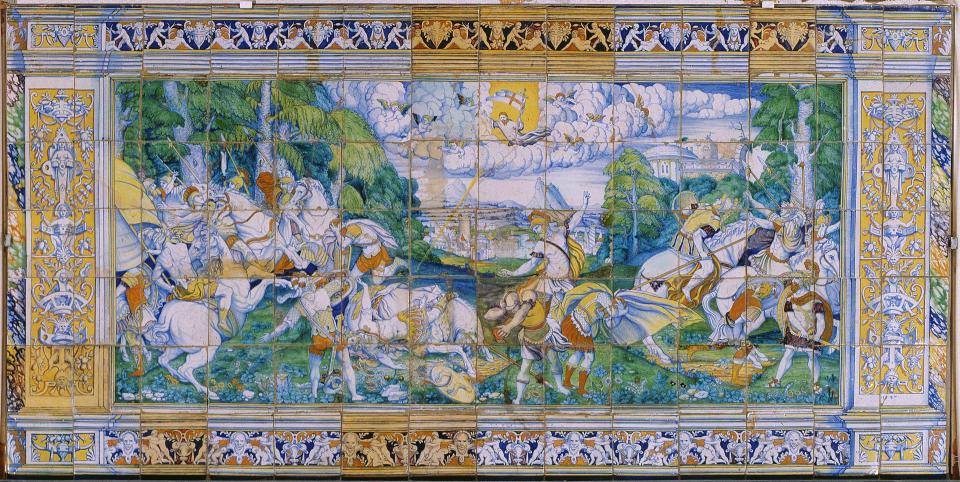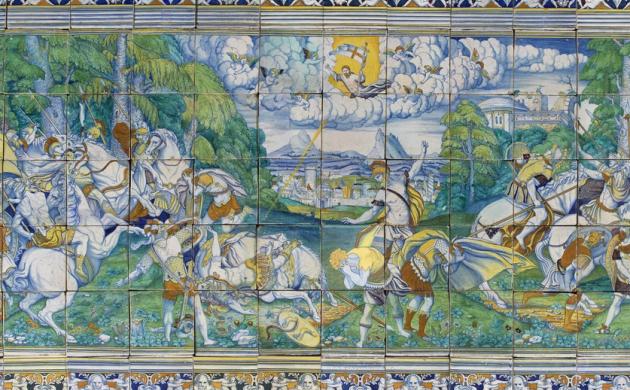'The conversion of Saul'

The 16th century tile panel ‘The Conversion of Saul’ is of exceptional high quality. It’s a proof of how the Italian technique of ceramic painting, the bright colour palette and French Mannerist style are entwined with local traditions.
In the past, restoration seriously damaged the quality of the work and led to some safety issues. In order to protect this piece of internationally-famous Belgian heritage for future generations, complete and sustainable specialist treatment was required. This was carried out in 2016-2017 with the support of the Baillet Latour Fund (King Baudouin Foundation). Polyester replica tiles which were used sixty years ago, were replaced by the 19th-century replica tiles. New replica tiles were made using 'photo ceramics' technology. Thus, the project sets an example for future treatment of similar tile panels.
The tiles are now mounted better and more safely, discoloured replica tiles have been replaced and the traces of former restoration have vanished. The public can now enjoy the exceptional images on the tiles once again.
Monitoring
The entire process was closely monitored by a guidance commitee, consisting of experts in historical and art-historical research, chemical research, archaeology, restoration and conservation. The commitee supervised the structural, technical and aesthetic approach.
More majolica tiles in the MAS | Vleeshuis collection
In a recent study by Frans Caignie all edge tiles from the 16th-century Antwerp majolica in the MAS collection were studied. Besides the Saul panel an additional 36 seperate tiles were added to the study. The report clarifies how the tiles reveal their secrets, which loose tiles belong together and which belong to separate tile panels.



